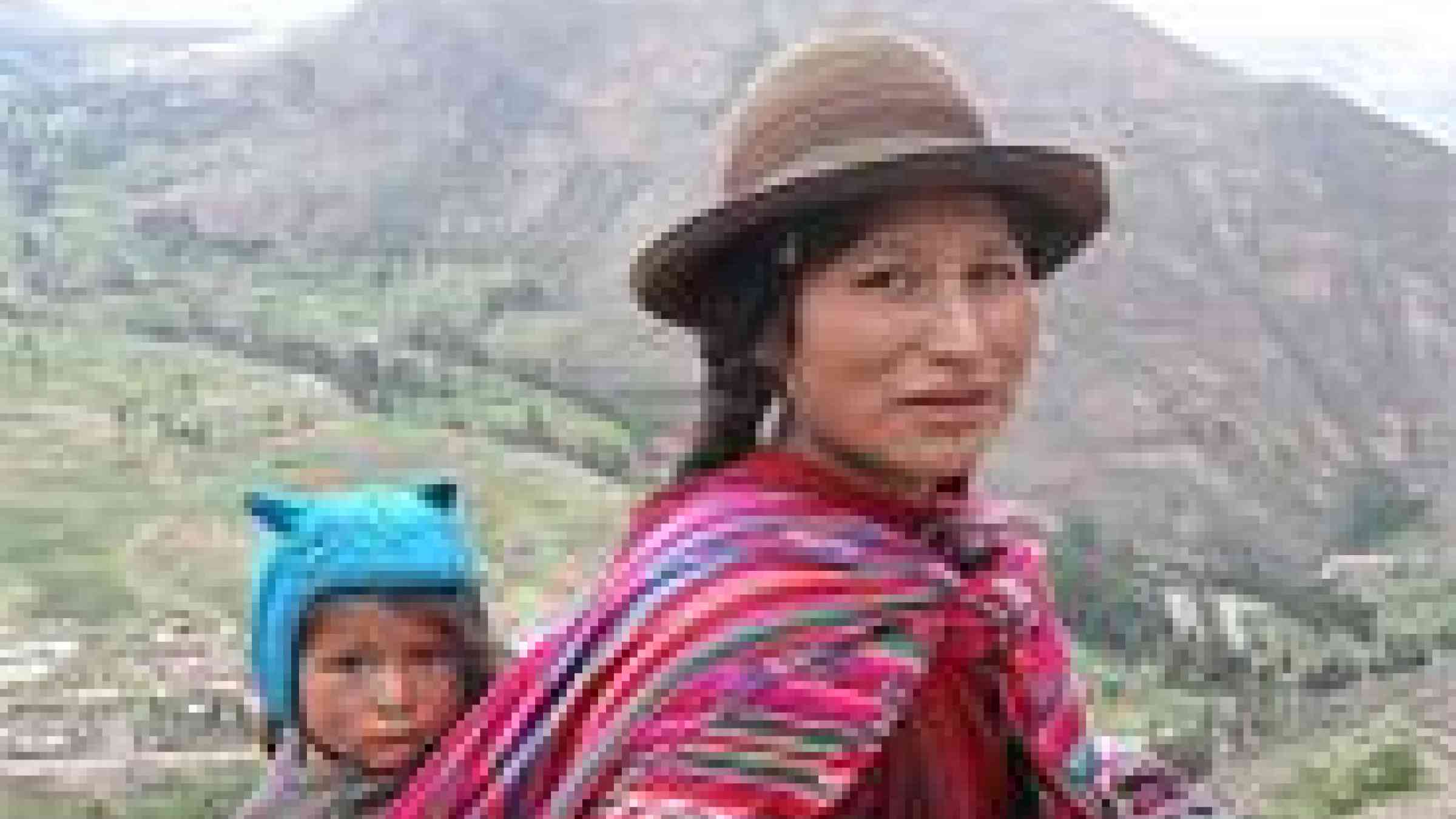International Indigenous Peoples Day: Radio and climate change in the Andes

Nairobi - Rural indigenous communities in the southern Andean highlands of Peru's Cuzco and Apurímac regions have been hit hard by climate change. Endemic poverty has meant that these remote communities cannot afford a bad harvest. Yet in recent years sudden changes in weather are impacting traditional crops like potato, maize and quinoa, a grain high in proteins and other valuable nutrients.
The International Day of the World's Indigenous Peoples, which takes place today, aims to highlight the plight and success stories of communities such as these.
Living at altitudes of over 3,000 meters, these communities are far from the urban knowledge hubs that are researching solutions for dealing with climate change, and largely rely on the radio for information. With this in mind, the UN Joint Programme on environment and climate change under the Millennium Development Goals Achievement Fund (MDG-F) in
February 2010 launched a radio broadcast popularly known as 'Pachamamanchista Munakusun' (Nurturing Mother Earth) to build awareness about climate change and adaptation measures.
"People like to hear news related to agriculture, since it is their -our- livelihood. I say 'ours' because my parents and I are also farmers, and we see that now it rains in months when it never used to rain, we see how the rivers and creeks are drying up," said rural radio presenter Alicia Escalante, from Tambobamba-Apurímac.
The show airs daily in Quechua, the local language, and Spanish to encourage families and farmers to identify local problems and propose ways for adapting to the new living conditions climate change brings. The broadcasts also motivate farmers to implement adaptation measures such as water harvesting, reforestation with native species, protection of biodiversity and prevention of forest fires and overgrazing.
"When I was young, that hill over there had snow the whole year, but it has been disappearing. This means that we will have less water for our crops and our animals," said Valentin Cahuana, leader of the Ccacacancha-Apurimac community. "Young people and adults need to reflect on our environment and we must ask ourselves why it is hotter than before, why it rains in months when it didn't used to rain."
People such as Alicia and Valentin share successful experiences in using adaptation measures such as crop diversification, traditional knowledge regarding indigenous plants and crops more resistant to the changing climate and higher temperatures, shifting planting to match changing rain patterns and growing crops in different ecological niches to test their resistance. Thanks to the radio show, farmers are now using these methods to ensure improved crops and yields
"Through the radio, we discover that in other communities our campesino [farmer] brothers are planting trees as a live fence to prevent the frost damaging the crops and to prevent soil erosion. If they can do it, so can we," said Emerpatriz Monje, from the Ccochapata-Cuzco area.
The Division of Regional Cooperation of the UN Environment Programme (UNEP) convenes the MDG-F Environment and Climate Change initiative, and works with 17 Joint Programmes in countries such as Afghanistan, China, Colombia, Egypt, Ethiopia, Jordan, Philippines and Turkey. In Peru, the radio broadcasts initiative was a collaborative effort between UNEP, the UN Development Programme (UNDP), the Food and Agriculture Organization (FAO) and the Pan American Health Organization (PAHO/WHO).
The Background
One year after the UN General Assembly established the International Day of the World's Indigenous Peoples (in 1993), the UN proclaimed the International Decade of the World's Indigenous Peoples. The goal of the first decade was to strengthen international cooperation for solving problems faced by indigenous peoples in such areas as human rights, the environment, development, education and health.
A second decade followed (2005-2015) which, among other priorities, encouraged the full and effective participation of indigenous peoples in decisions which directly or indirectly affect their lifestyles, traditional lands and territories and their cultural integrity. The UN General Assembly will also organize the World Conference on Indigenous Peoples in 2014 to share perspectives and best practices on the realization of the rights of indigenous peoples.
The need to strengthen participatory involvement of civil society, including indigenous peoples, was recently re-affirmed at Rio+20, where UNEP was requested to ensure the active participation of all relevant major groups and stakeholders.
Since its inception in 1972, UNEP has enjoyed a special relationship with indigenous peoples through initiatives tackling environmental issues and efforts to promote links between the needs of indigenous peoples and the global, regional and national development of environmental policy development and policy decision-making. The organization also created the Major Groups and Stakeholders Branch in its headquarters in Kenya to enhance the participation of all major groups, including indigenous peoples and their communities. Since 2000, UNEP has organized a yearly Global Major Groups and Stakeholders Forum (GMGSF) -in conjunction with its Governing Council / Global Ministerial Environment Forum - as the main way to ensure the participation of major groups at governance level.
Indigenous groups worldwide also received a boost with the launch of the travelling photo exhibition, Portraits of Resilience, which is part of the Many Strong Voices Programme (MSV) aimed at linking the populations in the Arctic and Small Island Developing States to help them meet the challenges of climate change. The exhibition gives indigenous youth a chance to document the changes through the use of photography and stories, and will be at the Smithsonian Institution in Washington this October as part of the Inuit Studies Conference. It can be seen on www.manystrongvoices.org/portraits.
For More Information, please contact:
Alexander Juras, Chief, Major Groups and Stakeholders Branch, UNEP Division of Regional Cooperation, Email: Alexander.Juras@unep.org
Mia Turner, UNEP Division of Regional Cooperation, Email: Mia.Turner@unep.org, Tel. +254-20-762-5243
Useful links:
UNEP's Major Groups and Stakeholders Branch: civil.society@unep.org
Radio broadcasts of the Joint Programmes: Comprehensive and Adaptive Management of Environmental Resources to Minimize Vulnerabilities to Climate Change in the High-Andean Micro Basin, Peru (MDG- F): http://www.pnuma.org/peru/Materiales_Publicaciones.php
The World Indigenous Television Broadcasting Conference:
http://www.unep.org/Documents.Multilingual/Default.asp?DocumentID=2676&ArticleID=9084&l=en